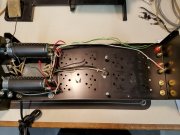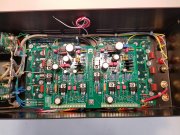oldphaser
Chief Journeyman
- Joined
- Sep 8, 2012
- Messages
- 869
If you go full comp you'll want the backplane boards also. Better soundstage, tighter bass...just better all around..
So this has more to do with converting the amplifier to a fully complementary output than something to do with using a WOPL backplane board.
This can also be accomplished by re-wiring the output stage like Phase Linear did on all of their fully comp 400 and 700 series two amplifiers.




